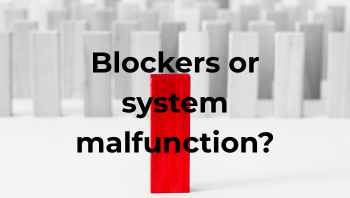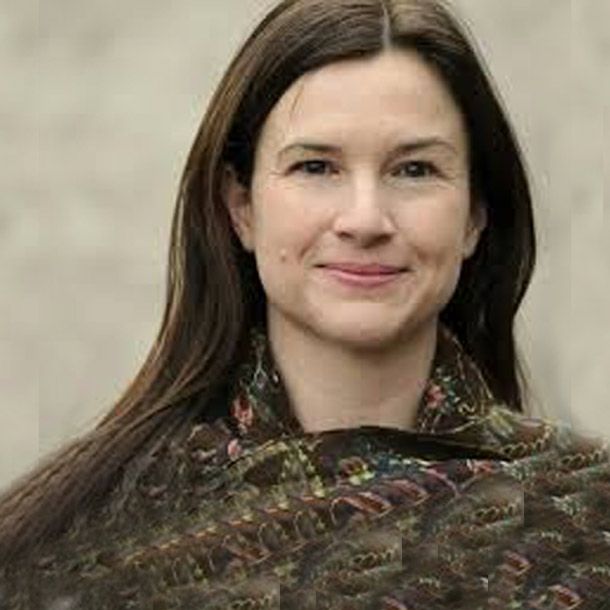The problem: you have “blockers” in the project
The cynical skeptic, the silent abductor, the vain show-off...
They slow things down, complain, or nag, and seem to sabotage every project from within.
Does this sound familiar? Often, the obvious assumption or first reflex is: We have to work with these people, otherwise we won't get anywhere, “convince” or “fix” them so that the project or the entire change can move forward.
But that's not enough. Because two things are true at the same time:
- There are personality patterns that really make change difficult.
- The bigger problem almost always lies in the system that gives such patterns room to exist in the first place.
So the crucial question is: How do we create a playing field that minimizes blockages?
Why blockers are often just the symptom
Organizations are like stages. When responsibility in plays (aka projects) is placed on a few “strong shoulders,” a vacuum is created:
The power player uses it for control.
Those seeking recognition put themselves in the spotlight.
Those who feel hurt withdraw because old grievances have never been resolved.
Those who disappear only fulfill their job description and do not feel responsible for the whole.
These are not malicious intentions, but understandable reactions in this setting. However, a system that establishes shared responsibility from the outset takes the stage away from these patterns.
The decisive lever: horizontal responsibility
We know from experience that change does not succeed if only project managers, management, or HR bear the responsibility. It succeeds when all affected areas are involved from the outset: managers, employees, interface representatives.
In this case, everyone stands on stage on an equal footing and is responsible for the success of this one play (aka project).
The key point here is that responsibility no longer means just “keeping my own area under control.” Instead, it means first actively and visibly assuming horizontal, overarching responsibility for the common goal and then aligning the vertical responsibility of my area with it.
This creates a level playing field: every area remains important, but no one can hide behind their “vertical responsibility.”
And what if they really are “difficult people”?
Of course, there are cases where individual dynamics are so strong that systemic interventions are not enough. In these cases, coaching, mediation, or clear boundaries can help. But in our experience, these are few and far between. In the majority of projects, the rule is: Don't try to fix people, but always start by designing the playing field together.
Practical example
In an industrial project, a mixed team was set up at the beginning: managers, employees from production, HR, and the works council. Always the first task: formulate a common goal. If possible, in three sentences, understandable to everyone. And keep working on it until everyone's commitment to it is strong and genuine! The second task: Make it clear that everyone is responsible for this goal. Not: “Everyone for their own area,” but: “We are all responsible for the whole and then coordinated in our areas.”
The result: Even the skeptics, who were initially considered potential “blockers” (every system has its usual suspects, right?), got on board because they were involved from the start and understood that responsibility is horizontal and that their area will and must contribute what is necessary.
Next week:
Blockers are often less of a problem than a reflection of a system without shared responsibility.
But even when responsibility is shared, people with old patterns don't just disappear. In the next part, we'll show you how to integrate individual dynamics in such a way that they don't block progress but release energy for change.
Impulse for your project:
Ask yourself the following questions at the start of your next project:
- Who absolutely must be at the table from the outset so that we have an overview of the entire organization/everyone affected by and involved in the project?
- What goal can we formulate in simple terms that everyone agrees on?
- How do we make it clear that horizontal responsibility for the whole comes first, followed by vertical responsibility for my area?
Want to dive deeper? Theoretical insights into the typology of “blockers” and the dynamics behind them
- Transactional analysis – games that block everything
Eric Berne (Games People Play, 1964) describes how people get caught up in recurring “games.” Example: the “yes, but...” game – every argument is countered, nothing moves forward. At the start of a project, this means that old wounds are repeated and shape the new process.
- Narcissism – grandiose vs. vulnerable
Research distinguishes between two forms (Miller et al., 2011):
• Grandios narcissism: Power, dominance, control. Blocks in order to secure superiority.
• Vulnerable narcissism: Insecurity, need for recognition. Blocks indirectly by using projects for self-expression.
- Role players & responsibility dodgers
The concept of Organizational Citizenship Behavior (OCB) describes voluntary commitment to the whole. The opposite: Withdrawal = working to rule, retreat. Argyris & Schön (Organizational Learning, 1978) call this defensive routines: patterns that ward off responsibility in order to protect oneself.


About me

All Rights Reserved
Get in touch
-
+49-(0)941 600 93 003
-
This email address is being protected from spambots. You need JavaScript enabled to view it. -
Thomas_Huber
ToChange Gmbh
-
Thomas Huber
-
Traubengasse 6
-
D-93059 Regensburg

